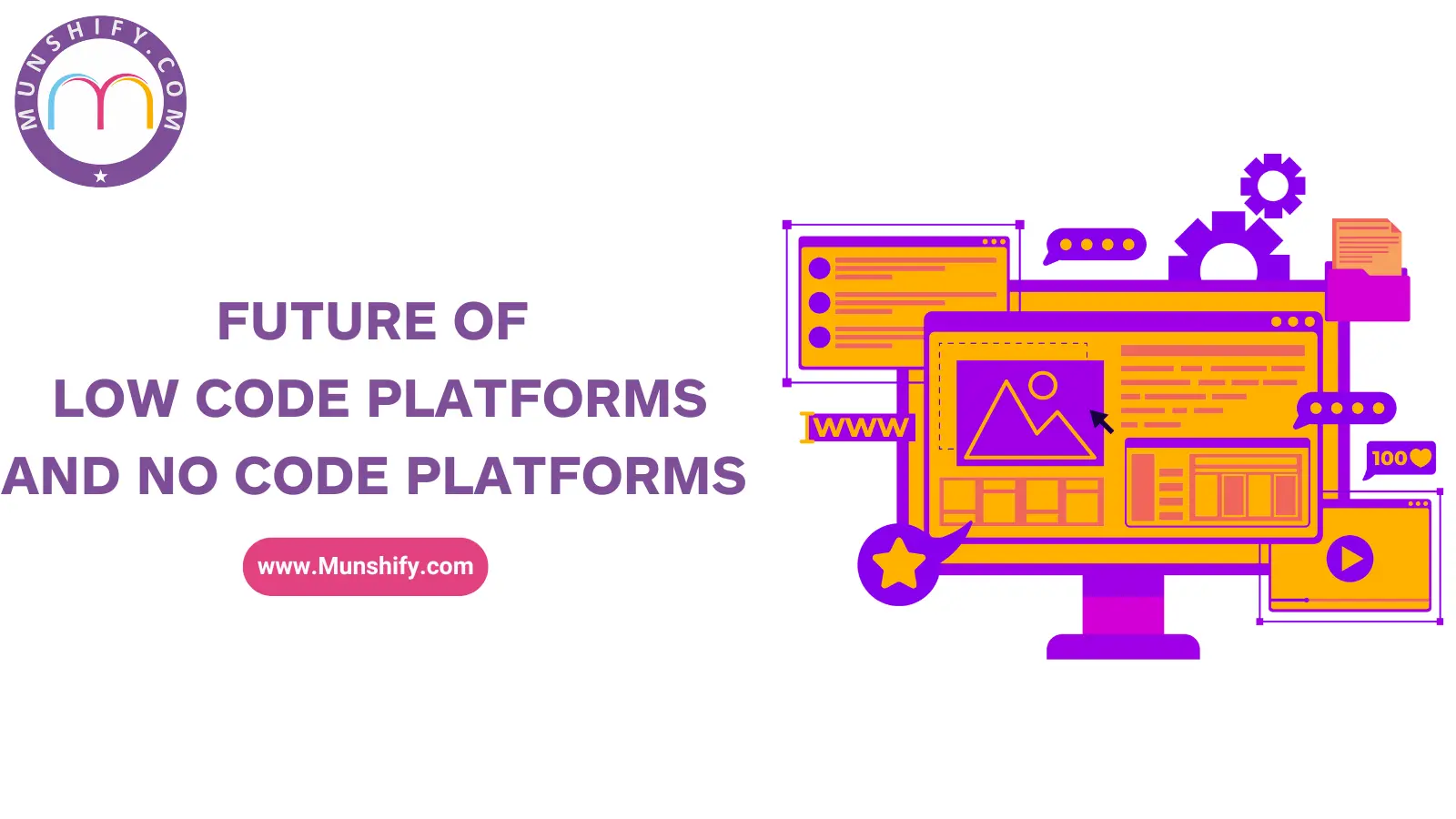The software development landscape is undergoing a seismic shift. Traditional coding, which once required highly specialized skills and extensive resources, is being transformed by the advent of low code and no code platforms. These innovations are democratizing the development process, enabling a broader range of people to create, deploy, and manage applications without the need for deep programming knowledge. As businesses and individuals increasingly leverage these platforms, we are witnessing a fundamental change in how software is conceived and built.
Table of Content
- Understanding Low Code Platforms and No Code Platforms
- Benefits of Low Code Platforms and No Code Platforms
- Challenges and Limitations
- The Future of Software Development
Understanding Low Code Platforms and No Code Platforms
Low code platforms and No code platforms are designed to simplify and expedite the software development process. Low code platforms provide a visual development environment where users can drag and drop components to build applications. They still require some level of coding, primarily for customization and complex functionality. This makes them ideal for professional developers looking to accelerate their workflow.
Conversely, Low code platforms take simplification a step further by eliminating the need for any coding knowledge. Users can create fully functional applications using only visual tools and pre-built templates. These platforms are tailored for business users or “citizen developers” who understand business needs but lack programming skills. By lowering the barriers to entry, both types of platforms enable a more diverse group of people to participate in software development.
Benefits of Low Code Platforms and No Code Platforms
- Speed and Efficiency: Both low code platforms and no code platforms significantly reduce development time, enabling faster deployment of applications.
- Cost Savings: By minimizing the need for extensive coding and specialized skills, these platforms help cut down on development costs.
- Accessibility: They make software development accessible to a broader range of people, including those without technical backgrounds.
- Flexibility and Customization: Users can easily modify and update applications as business needs evolve.
- Reduced IT Backlog: These platforms allow business users to handle many of their own development needs, reducing the burden on IT departments.
- Improved Collaboration: They facilitate better collaboration between IT and business teams, leading to more effective solutions.
- Scalability: Cloud-based low code and no code platforms provide scalable solutions that can grow with the business.
- Integration Capabilities: Easy integration with existing systems and third-party applications enhances the functionality of developed solutions.
- Security: Modern platforms include robust security features to protect data and ensure compliance.
- User Experience: Enhanced UI/UX tools help create more intuitive and user-friendly applications.
Challenges and Limitations
- Limited Customization: While low code platforms allow some level of coding, No code platforms may not offer the same level of customization, potentially limiting functionality.
- Scalability Issues: For very large and complex applications, these platforms might struggle to scale effectively.
- Vendor Lock-in: Dependence on a single platform can lead to vendor lock-in, making it challenging to switch providers or migrate applications.
- Security Concerns: Although security features are improving, there is still concern about data security and compliance, especially with low code platforms.
- Performance Limitations: Applications built on these platforms may not perform as well as those developed with traditional coding, particularly under heavy load.
- Complex Business Logic: Handling highly complex business logic can be challenging on no code platforms.
- Learning Curve: Despite their simplicity, there is still a learning curve associated with mastering these platforms.
- Interoperability: Ensuring seamless interoperability with all existing systems can be difficult.
- Dependency on Platform Features: Users are limited to the features and capabilities provided by the platform.
- Quality Control: Maintaining consistent quality and performance across different applications and users can be challenging.
The Future of Software Development
The future of software development is being reshaped by the proliferation of low code and no code platforms. These tools are not just a passing trend but a fundamental shift in how applications are developed and deployed. As they continue to evolve, we can expect several key developments.
First, artificial intelligence and machine learning will become more deeply integrated into these platforms, providing advanced capabilities such as predictive analytics and automated decision-making. This will further enhance the power and usability of low code and no code solutions.
Second, the focus on user experience will intensify, with platforms offering more sophisticated tools for UI/UX design. This will enable even non-technical users to create applications that are not only functional but also aesthetically pleasing and easy to use.
Moreover, as more enterprises adopt these platforms, we will see increased investment in security and compliance features. This will address concerns around data protection and regulatory requirements, making no code low code platforms a viable option for even the most sensitive applications.
Additionally, the rise of community-driven development and collaborative features will foster innovation and knowledge sharing. Users will be able to leverage the collective wisdom of a global community to solve problems and enhance their applications.
Finally, the trend towards mobile-first development will continue to grow. No code Low code platforms will increasingly support the creation of mobile applications, reflecting the ongoing shift towards mobile computing.
In conclusion, Munshify low code platforms and no code platforms are revolutionizing the future of software development. By democratizing the creation of applications, they are empowering a new generation of developers and enabling faster, more efficient, and cost-effective solutions. While there are challenges and limitations to overcome, the benefits far outweigh the drawbacks. As these platforms continue to evolve and integrate new technologies, they will play an increasingly central role in shaping the digital landscape. Whether you are a seasoned developer or a business professional looking to solve specific challenges, low code and no code platforms offer a powerful and accessible way to bring your ideas to life.
Know more about Low Code No Code Platforms.



